OUR COFFEES: |
|
| Every year, we travel the globe to find the finest coffee available. We'll try hundreds of samples from any one country. Then, we select the most spectacular coffees to bring home to you. Our company's size is perfect for sourcing the best of each country's crop. We're able to bring in special coffees that might otherwise be out of the small roaster's reach or too limited in supply for the large roaster. Each of our Levels is a finely tuned recipe, blended from beans carefully chosen for their nuances and flavor characteristics. To balance Level 3's pleasantly crisp acidity with its full-bodied physique, for example, we source the best beans that embody these traits, then blend them together prior to roasting. Crafting the blends at this green stage allows us to later achieve a roast that's consistent. Coffee's all about blend names and regions. What do they mean? What do they taste like? That's why we're pretty proud of our new Levels—it's kind of a game changer. We developed a simple system of five distinct Levels, with flavor and boldness profiles that span the entire range of coffee enjoyment. |
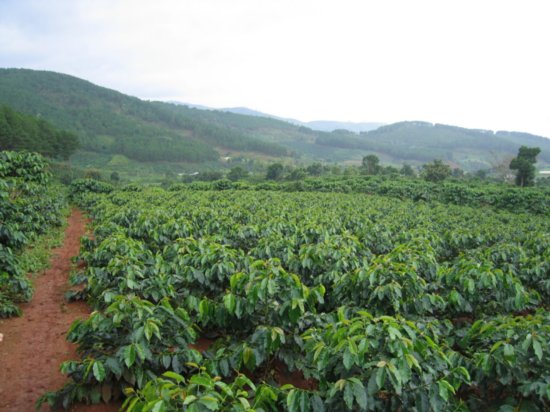
|
|
Level 1: Dark, Bold, and Rich Level 2: Mild, Nutty with Spicy flavor Level 3: Light, Crisp, with a Tangy taste Level 4: Moca, with a Rich, Deep flavor Level 5: Vanilla, Unique, with a Thick, Fresh Taste Level 6: Decaf, a Gentle yet Crisp and Light flavor Simple, right? Finding your perfect coffee should be a joy, not a test. Proceed to learn how every step of our process is driven by our Levels. |
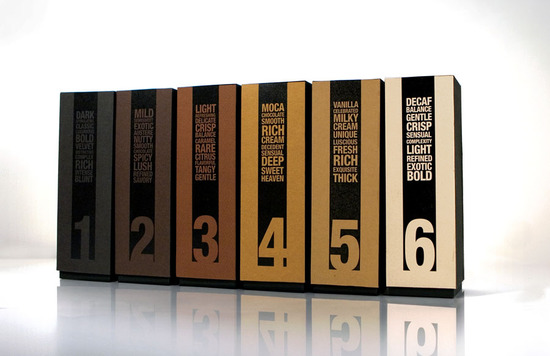
|
EspressoMost espresso blends are based on one or several high quality Brazil arabicas, some washed, some dry-processed. They often involve some African coffees for winey acidity or enzymatic flowery /fruitiness, or a high grown Central American for a cleaner acidity. A Colombian-based espresso blend offers a sharper, sweeter flavor but won't result in as much crema production. Here are a couple interesting espresso blends we have fooled around with. Here's a great starter blend for a sweeter, cleaner espresso. The absence of North African or Yemeni coffee takes out a little bite from the cup and possibly some lurking fruity ferment flavor. this is, as noted above, a sweet blend used at a street level roasterie/caffe in Rome. They use a Guatemala Antigua for the Central. 50% Brazil Cerrado Monte Carmelo 25% Colombian 25% Panama or other bright Central American I don't think Colombians really pull their weight in a blend (though many people use them as a base or part of their blends), and like using some Sumatra better: 50% Brazil Cerrado Monte Carmelo 25% Panama or other bright Central American 25% Sumatra -Premium like Triple-Pick, Lintong Some sharp sweetness (Central American) hides behind the nutty Brazil flavors and the wonderful Yemeni aromatics. Mandheling adds body and depth. Yemeni coffees are fun for espresso blends, where they can be used like spice to give zest the aromatically or enzymatically flat blends. Roast to Agtron 40 to 35. Good crema production from this blend due to the many dry-processed coffees. 40% Brazil Cerrado Monte Carmelo 20% Panama or other bright Central American 20% Yemen 20% Sumatra Mandheling |
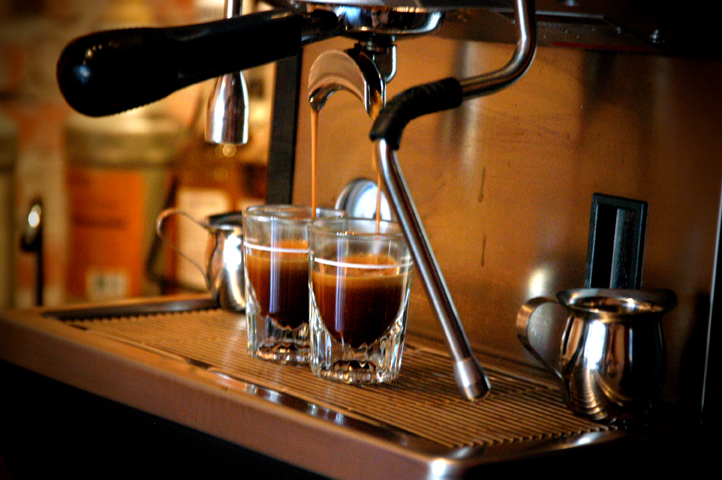
|
Espresso MacchiatoA great macchiato can be a religious experience, but a bad one can be worse than hell, redolent of liquefied cigar ash and burnt rubber. Why limit your coffee consumption to just drinking a beverage from a cup? Coffee is a brilliant flavoring for food. Here are five recipes that make the most of this deep and delicious ingredient ... A macchiato in the Northwest has a touch more milk added than does the classic Italian style, which is simply a wisp of foam "marking" the espresso, with no blending of the two. Neither style goes anywhere near caramel, by the way. Sometimes a touch is just enough. And so it is with the slight dab of foam we set atop our signature espresso in this classic European-style beverage. Anything more than a hint and you risk obscuring the rich, caramel flavor that gives a simple espresso its wonderful intensity. And that’s the last thing we’d want when preparing your perfect shot. |
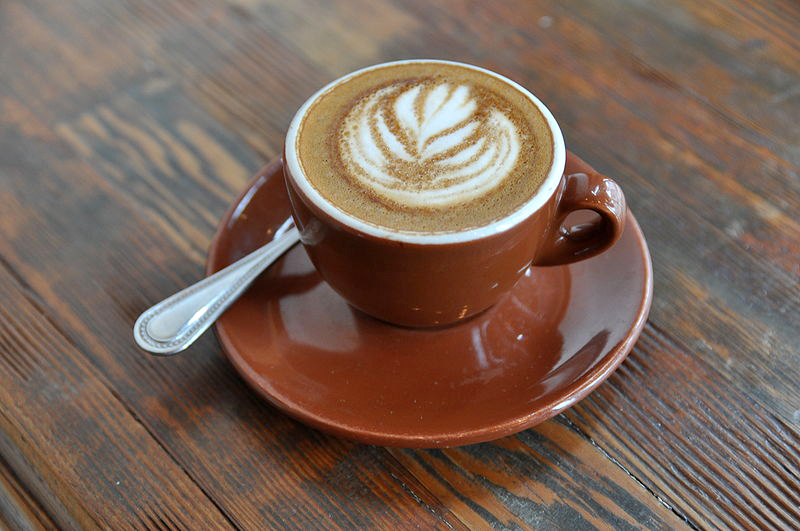
|
Espresso con PannaWelcome to the club, espresso lover. This is the perfect introduction to espresso for those who are unsure they’re ready for the full-throttle intensity of a straight-up shot. The delicate dollop of whipped cream softens the rich and caramel espresso flavors so exquisitely, you may choose to forego adding sugar altogether. The Italian drink is translated as, “espresso with cream“. After the espresso is created through high pressured hot water then sweet homemade whipped cream is added. And of course if you do not want the added sugar then the cream by itself is just enough to take the bite out of the dark coffee taste. The espresso con panna is a favorite in the United States. In fact, it can be made with one, two or three shots. Because of it’s bitter taste this drink may not be for everyone, especially if you enjoy tasting less of the coffee and more of the filler. But for the robust taste buds this drink is a creamy delight and very simple to make. |
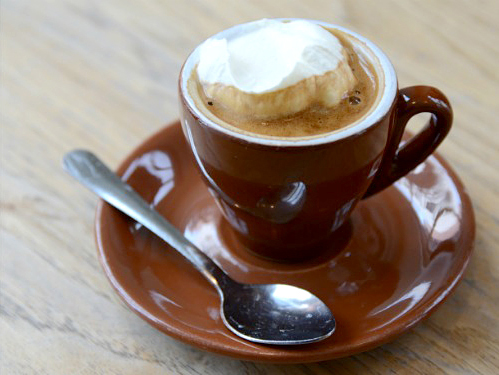
|
Caffe LatteRich, full-bodied espresso in steamed milk, lightly topped with foam. A rich blend of Columbian mountain grown arabica coffee in a non-dairy powdered base. Medium bodied coffee with a smooth fine flavor. This is the original coffeehouse classic. And like most classics, part of its appeal comes from its simplicity. A caffè latte is simply a shot or two of bold, tasty espresso with fresh, sweet steamed milk over it. Some prefer to add syrup or extra espresso to the recipe. Some maintain that it is entirely perfect as is. The first English language use of the term caffè latte is credited to American author William Dean Howells in his 1867 essay “Italian Journeys”. |
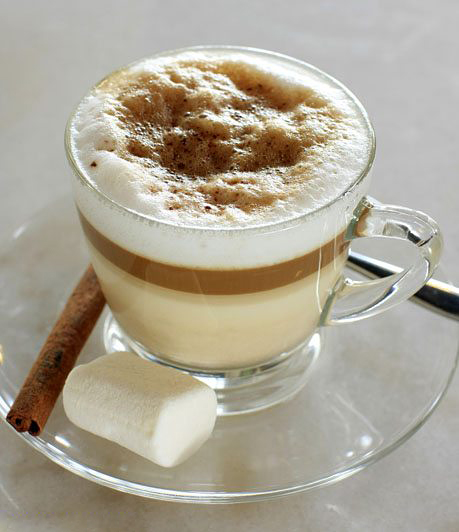
|
Flat White Espresso40 % Finca La Fany, El Salvador This component is a washed, 100% Red Bourbon lot from Finca La Fany in Ahuachapan in the Ilamatepec mountains of El Salvador.James visited this farm and the Silva family in 2006 after having used their coffee in the blend that gave him 5th place at the World Barista Championship in 2006. Although a small farm, the careful hand crafted approach to every step of the production chain provides work for 24 families from the local community. The 27 hectares of Red Bourbon planted at La Fany fall under the Mesoamerican Biological Corridor System that stretches from Mexico to Panama, providing sanctuary for native and migratory birds as well as functioning as a "substitute forest". With crisp, juicy acidity, sweet sugars and aniseed notes this component gives the top notes to the blend. 40% Agribahia Bahitalia, Brazil The Agribahia group under the direction of Silvio Leite consists of a few member families in Brejões, who have created this selection by blending washed, pulped and natural processes of their harvest. The balance in flavours that this creates lends itself perfectly to brewing as espresso, offering a well rounded canvas for the other two elements to play off. 20% Sumatra Aceh Takengon Collected from small growers around Takengon in the Northern Sumatran province of Aceh, and milled by Sarimakmur exports, this Sumatra is the base of the espresso, giving it the heavy, herbal, earthy notes that contribute to a rich, dense texture. |
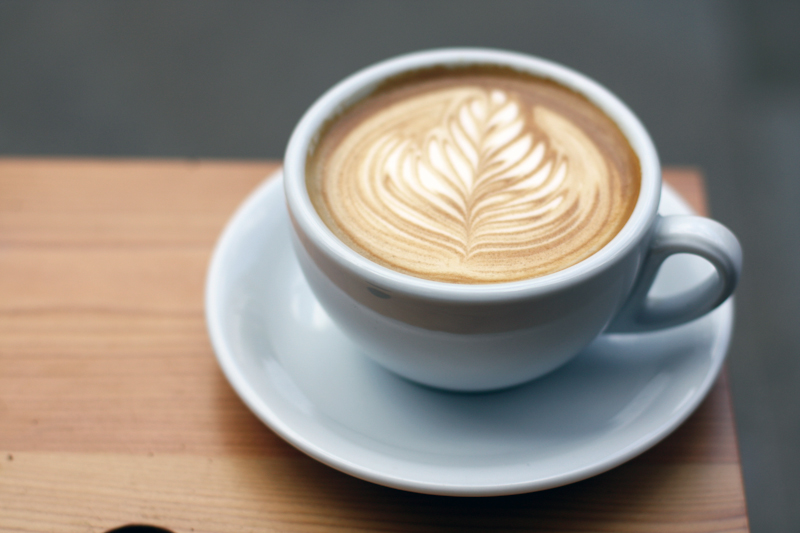
|
CappuccinoEspresso with steamed milk, topped with a deep layer of foam. With less milk than a latte, cappuccino offers a stronger espresso flavor and a luxurious texture. To make it properly requires much skill and attentiveness. Arguably the most important part is frothing the foam to velvety perfection as the milk steams – something our baristas take great care to achieve. The milky moustache that clings to your upper lip is proof we’ve made yours right. And may we say, you wear it well. Cappuccino is considered mostly a breakfast beverage in Italy, while espressos are enjoyed any time of day. |
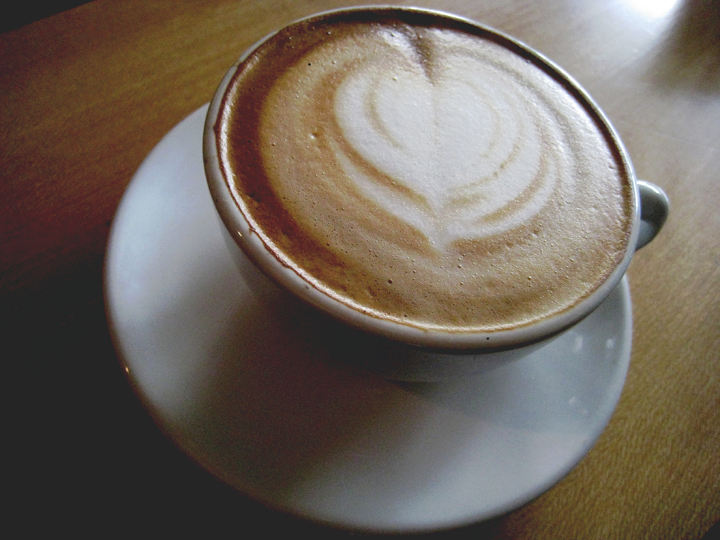
|
Mocha Coconut FrappuccinoRich mocha sauce and coconut-flavored syrup blended with coffee, fresh milk, and ice. Topped with sweetened whipped cream, mocha drizzle and toasted coconut flakes. Get those taste buds ready for some summer fun with the coolest beverage on the block – our new Mocha Coconut Frappuccino. Rich mocha sauce and coconut-flavored syrup blend together to make this treat a cool, creamy and extremely delicious way to spend any summer day. The coconut isn’t a nut at all – it’s a seed. In fact, it’s the largest seed on earth. |

|
AmericanoRich, full-bodied espresso with hot water in true European style. In Europe, coffee is essentially espresso – which, in America, isn’t very much coffee. To create a caffè americano – a coffee that satisfies the American preference for more sips in every cup – Europeans simply add hot water to their espresso. While the americano is similar in strength and taste to American-style brewed coffee, there are subtle differences achieved by pulling a fresh shot of espresso for the beverage base. The best way to discover these nuances, of course, is to try a cup yourself. Whereas water is added to espresso after it’s been extracted in a caffè americano, a lungo, or long espresso, is made by passing more water through the espresso machine. |
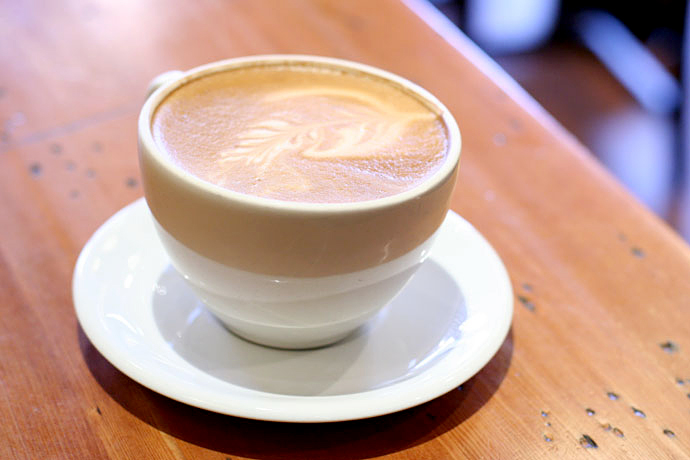
|
